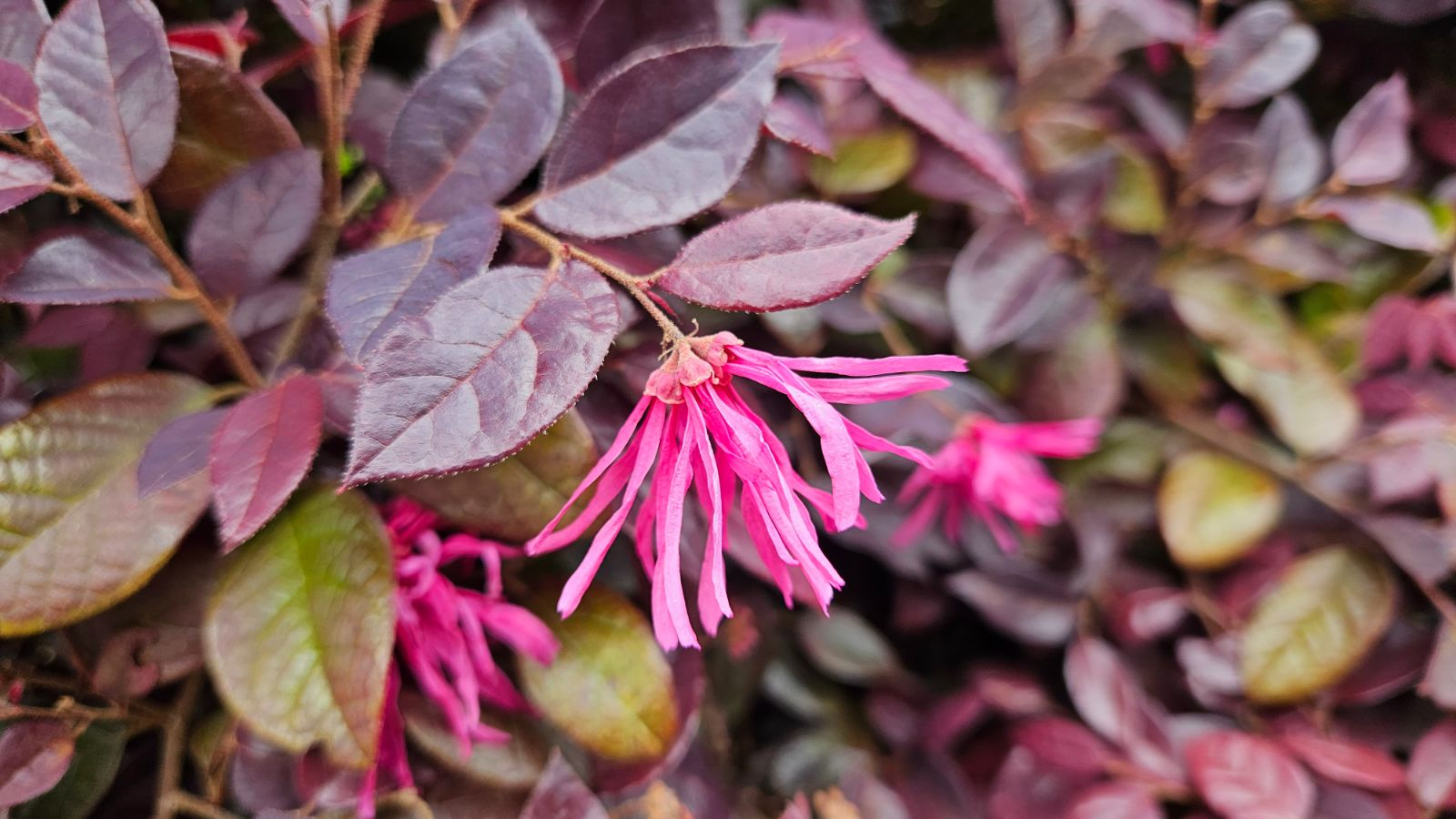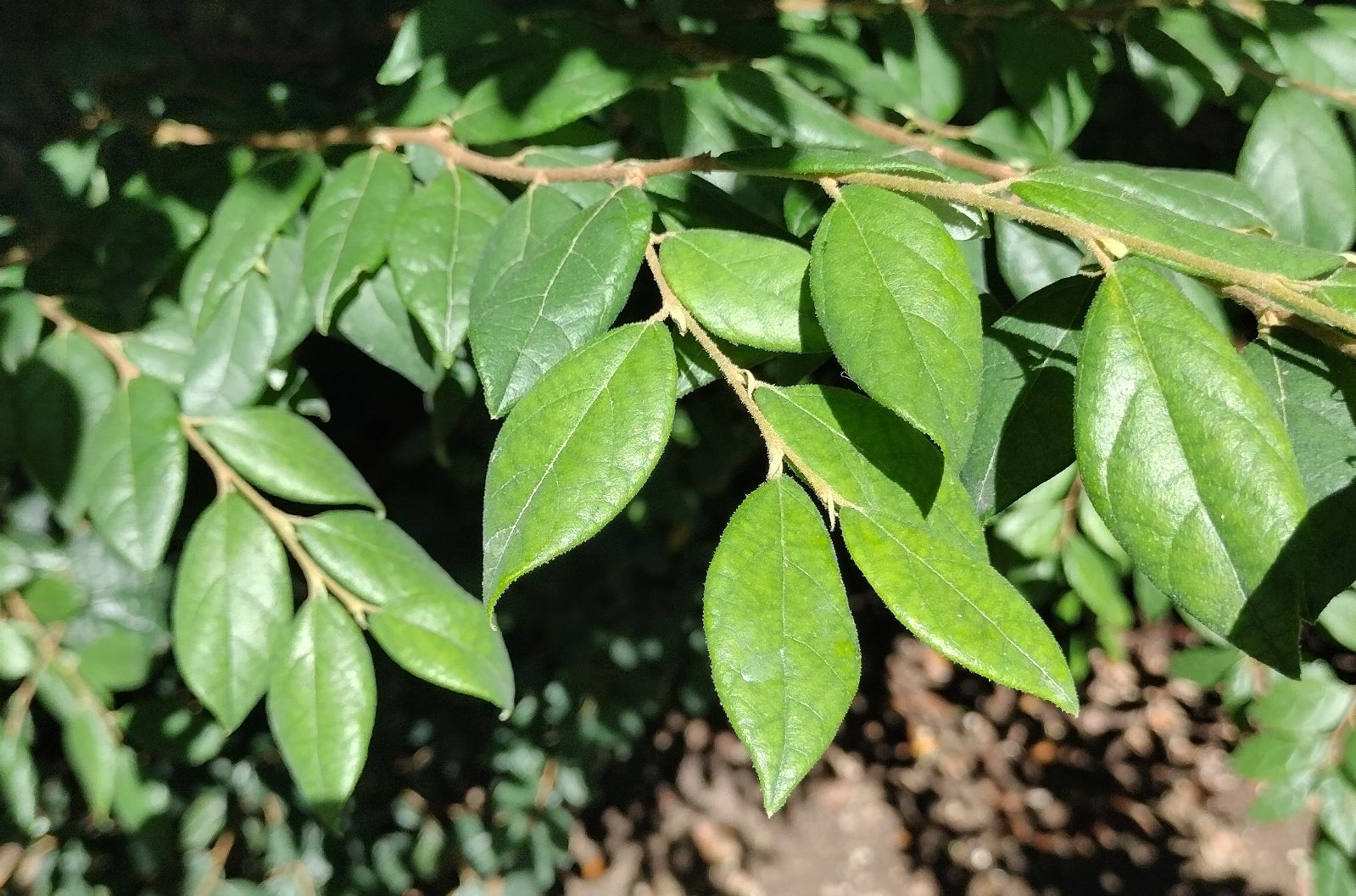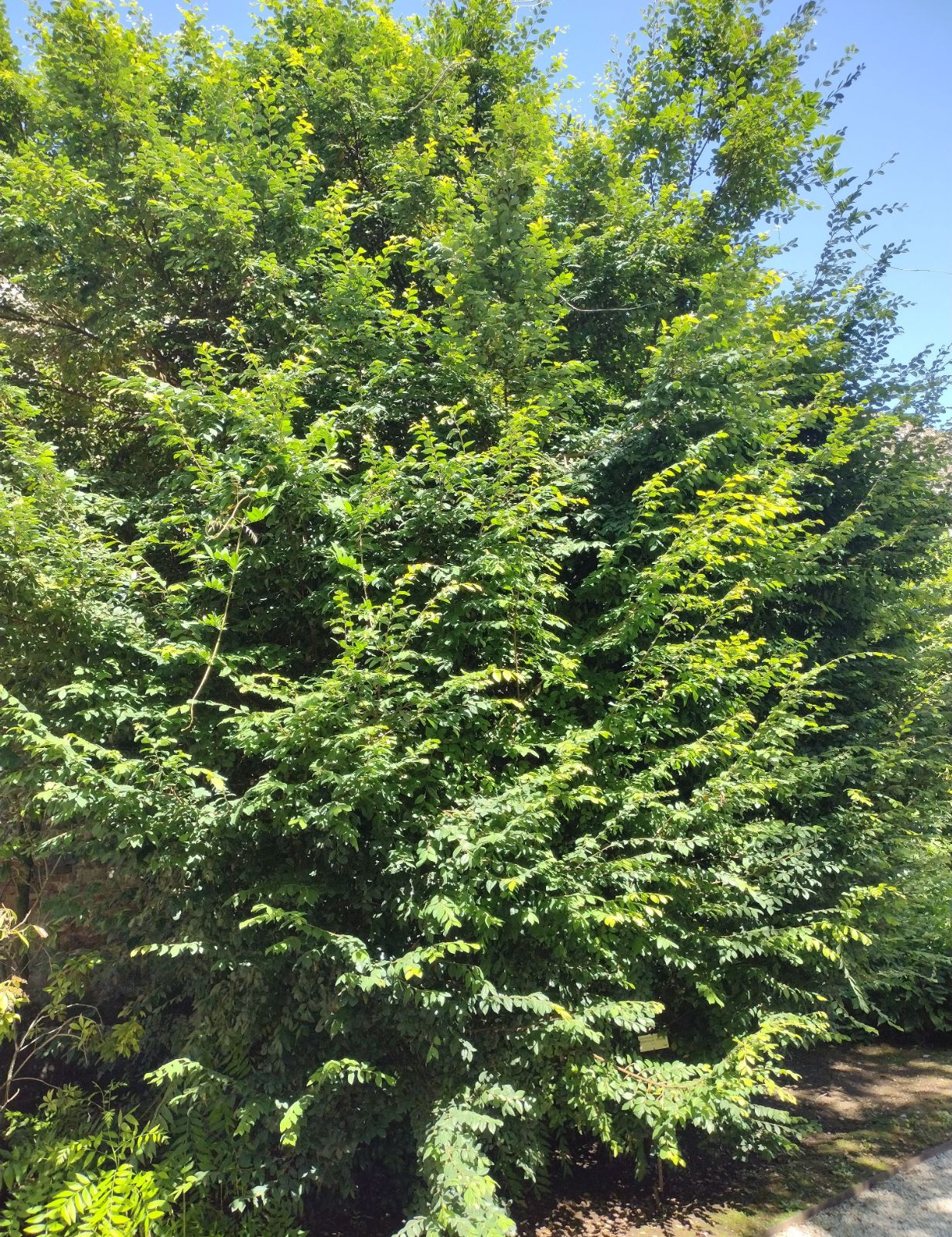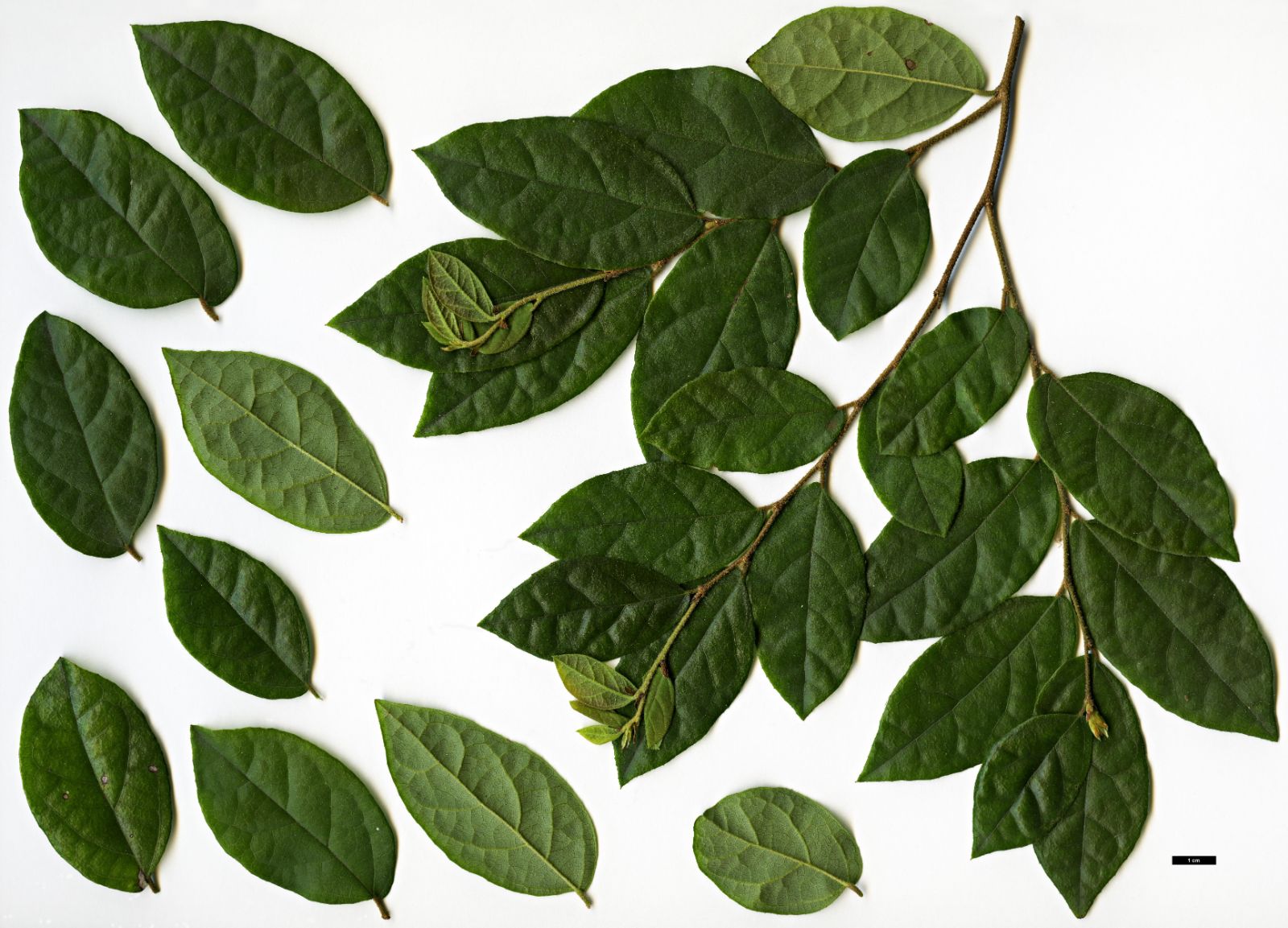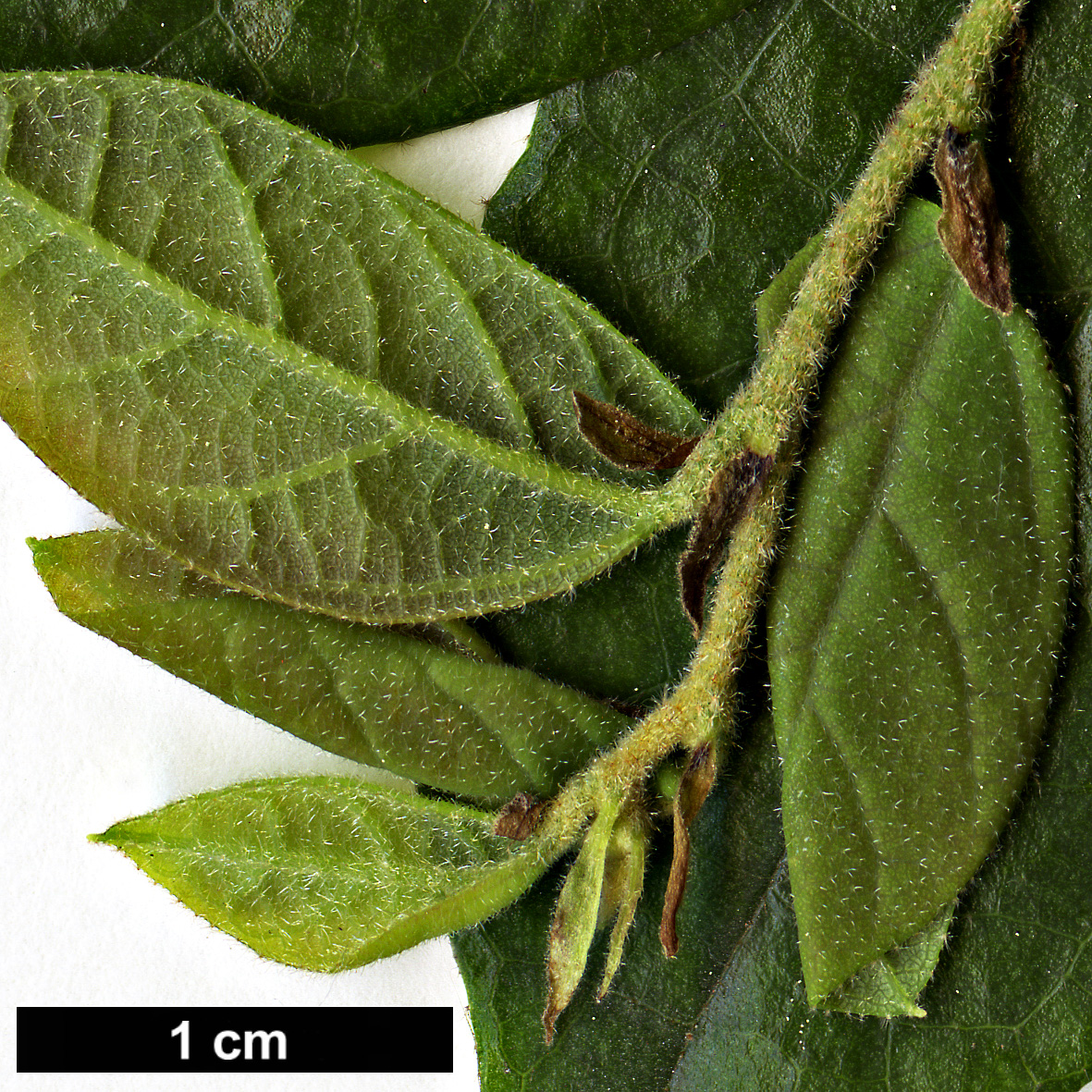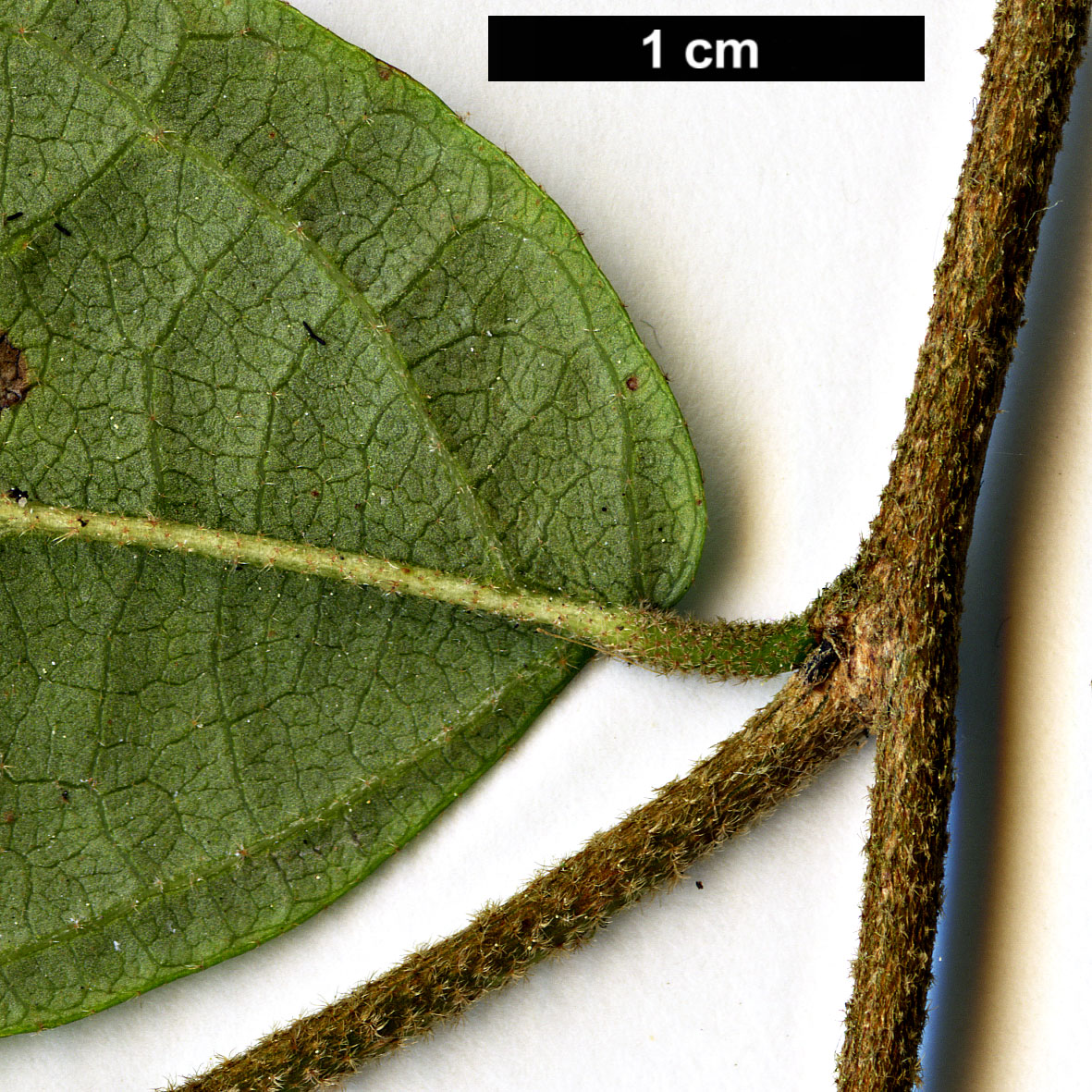Loropetalum chinense
Credits
Article from Bean's Trees and Shrubs Hardy in the British Isles
Recommended citation
'Loropetalum chinense' from the website Trees and Shrubs Online (treesandshrubsonline.
Genus
Synonyms
- Hamamelis chinensis R. Br.
- L. indicum K. Tong
Other taxa in genus
An evergreen shrub of bushy, very twiggy habit, 5 or 6 ft high; branchlets crooked, wiry, covered thickly with brownish stellate down. Leaves ovate or oval, 1 to 21⁄2 in. long, 3⁄4 to 11⁄4 in. wide, markedly unequal at the base, pointed at the apex, rough and with scattered hairs above, paler beneath, margin finely toothed; stalk about 1⁄8 in. long, hairy. Flowers very like those of witch-hazel in appearance, but white; they are produced in February and March, three to six crowded in a head; petals four to each flower, strap-shaped, 3⁄4 in. long, 1⁄16 in. wide; flower-stalk and outside of calyx clothed with white stellate down. Seed-vessel a woody, ovoid, nut-like capsule.
Native of China and Assam; also found in one locality in Japan; introduced by Maries for Messrs Veitch in 1880. This singular and pretty shrub is too tender to thrive near London without protection, and can only be recommended for trial in the mildest parts of these islands. Grown out-of-doors in summer, and wintered in the coolest conservatory, it makes a very pretty shrub in February when covered with blossom. It likes a proportion of peat in the soil, and is easily increased by cuttings.
In China, this species is mainly or wholly confined to warm regions and low altitudes – hence its tenderness. It might prove hardier if reintroduced from Japan.

